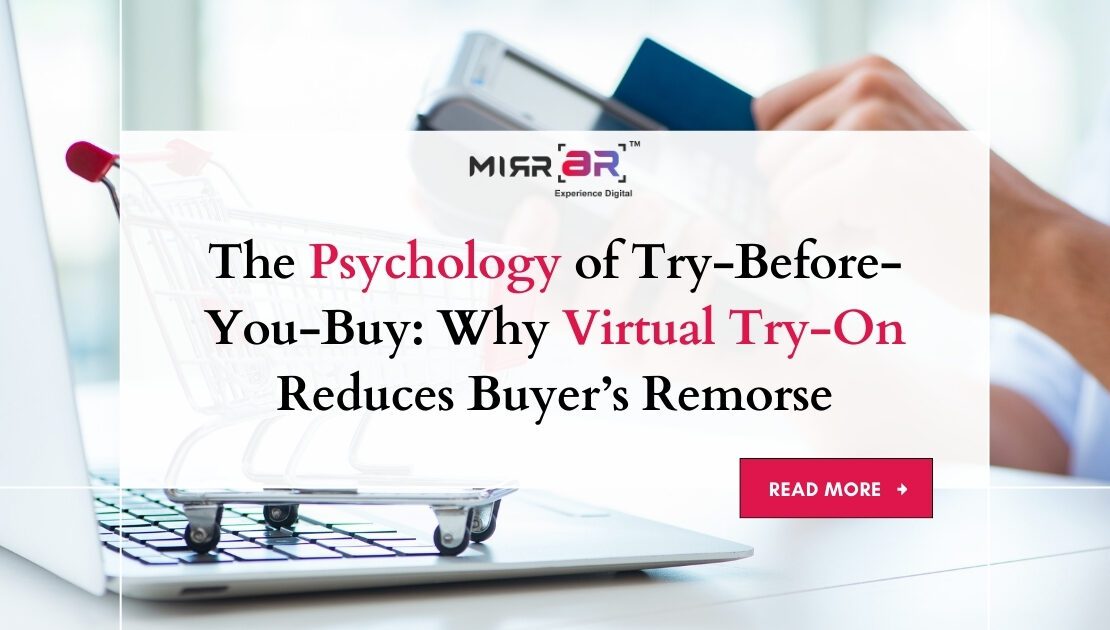
In today’s digitally dominated retail landscape, the lines between physical and online shopping experiences are increasingly blurred. Consumers crave convenience, but they also want confidence in their purchases—especially when it comes to fashion, accessories, eyewear, beauty, and even furniture. Enter Virtual Try-On (VTO) technology: a powerful innovation that taps into the psychology of shopping to reduce buyer’s remorse and enhance satisfaction.
At its core, VTO replicates a crucial element of in-store shopping: the ability to try before you buy. This immersive feature allows users to virtually see how a product will look on their face, body, or even in their home before making a purchase decision. But why is this experience so important for the consumer psyche? Let’s delve into the psychological factors that explain why VTO significantly lowers post-purchase regret.
The Role of Visualization in Consumer Decision-Making
One of the most fundamental principles in consumer psychology is visualization. The human brain processes images 60,000 times faster than text, and 90% of information transmitted to the brain is visual. When shoppers can see themselves wearing a piece of jewelry or placing a piece of furniture in their home via AR, it creates a stronger emotional connection to the product.
This sense of ownership—even before the purchase—is known as mental simulation. When users simulate usage in a realistic environment, it reduces uncertainty. This is especially critical for categories like luxury fashion or home decor, where look, fit, and feel are major decision drivers.
Virtual Try-On removes ambiguity by showing customers exactly how a product integrates into their reality. That clarity significantly decreases hesitation and increases post-purchase satisfaction.
Instant Feedback Loops Reinforce Confidence
Another psychological benefit of VTO is the immediacy of feedback. In a traditional e-commerce setting, customers rely on static images, reviews, or sizing charts. But none of these offer real-time interaction with the product.
With VTO, users instantly see how a lipstick shade complements their skin tone, how a necklace lays on their neckline, or how a sofa looks in their living room. This instant feedback provides a sense of control and empowerment, which is a vital factor in consumer trust.
When shoppers feel in control of their decision-making process, they are far less likely to experience regret afterward. It also shifts the decision from an impulsive purchase to a well-informed one—thereby reducing the cognitive dissonance often associated with buyer’s remorse.
Personalization Builds Emotional Connection
People are more likely to commit to something that feels uniquely tailored to them. Virtual Try-On supports personalization at scale. With tools that allow users to change colors, styles, sizes, or even mix and match items in real time, customers are no longer passive viewers—they become co-creators.
This interaction creates emotional investment in the product. The more time a person spends customizing and visualizing an item, the stronger their attachment becomes. This emotional bonding decreases the likelihood of post-purchase doubt or dissatisfaction.
Moreover, platforms like MirrAR integrate features like 3D configuration and AI-powered personalization, allowing for deeper engagement and a more customized shopping experience.
Social Validation and Sharing Add Reinforcement
In the age of social media, shoppers often seek social validation before making a purchase. Many VTO platforms come with built-in sharing features, allowing users to send snapshots or videos of themselves trying on items to friends and family for opinions.
This peer validation not only builds confidence but also reduces the psychological burden of decision-making. If multiple people agree that a product suits you, your brain naturally considers that as positive reinforcement—which translates to a more confident purchase and less post-buy regret.
Reducing Returns = Increasing Satisfaction
Returns are a major concern in online retail, and many are driven by unmet expectations. VTO plays a critical role in reducing these returns by setting realistic expectations. When buyers have a near-accurate visualization of the product before buying, they’re less likely to be disappointed upon arrival.
This not only enhances customer satisfaction but also contributes to environmental sustainability and reduces costs for retailers. By helping consumers make better decisions upfront, VTO aligns psychological comfort with practical outcomes.
Post-Purchase Rationalization: Cementing the Choice
Once a purchase is made, consumers tend to look for reasons to justify their decision—a process known as post-purchase rationalization. If the buying journey included an engaging and empowering VTO experience, the customer already feels validated.
They remember the time spent customizing, visualizing, and sharing—their decision feels deliberate, not impulsive. This reduces any internal conflict and reassures them that they made the right choice.
Final Thoughts
The future of retail is not just about faster checkouts or bigger catalogs—it’s about smart, psychology-driven experiences. Virtual Try-On is more than a digital tool; it’s a bridge between imagination and reality, removing barriers that often cause doubt or regret in online shopping.
By leveraging visualization, personalization, social sharing, and instant feedback, VTO aligns seamlessly with the psychological needs of modern consumers. It empowers them, builds trust, and, most importantly, significantly reduces buyer’s remorse.
As retailers and brands look to elevate their customer experiences, Virtual Try-On will not just be a trend—it will be a psychologically essential feature in delivering satisfaction and loyalty in the digital age.
